How to Fix Timing Belt Noise: Expert Tips & Solutions

Hearing timing belt noise? This could signal mechanical problems. In this article, discover the causes of timing belt noise, how to diagnose it, and effective solutions. Stay tuned for practical tips to keep your vehicle running smoothly.
Key Takeaways
-
Timing belt noise is primarily caused by misalignment, improper tensioning, and wear and tear, indicating potential mechanical issues.
-
Design modifications, including pulley optimization and material choice, can significantly reduce timing belt noise and enhance performance.
-
Regular maintenance practices such as inspections and correct tension adjustments are essential for minimizing timing belt noise and preventing damage to the mechanical system.
Understanding Timing Belt Noise
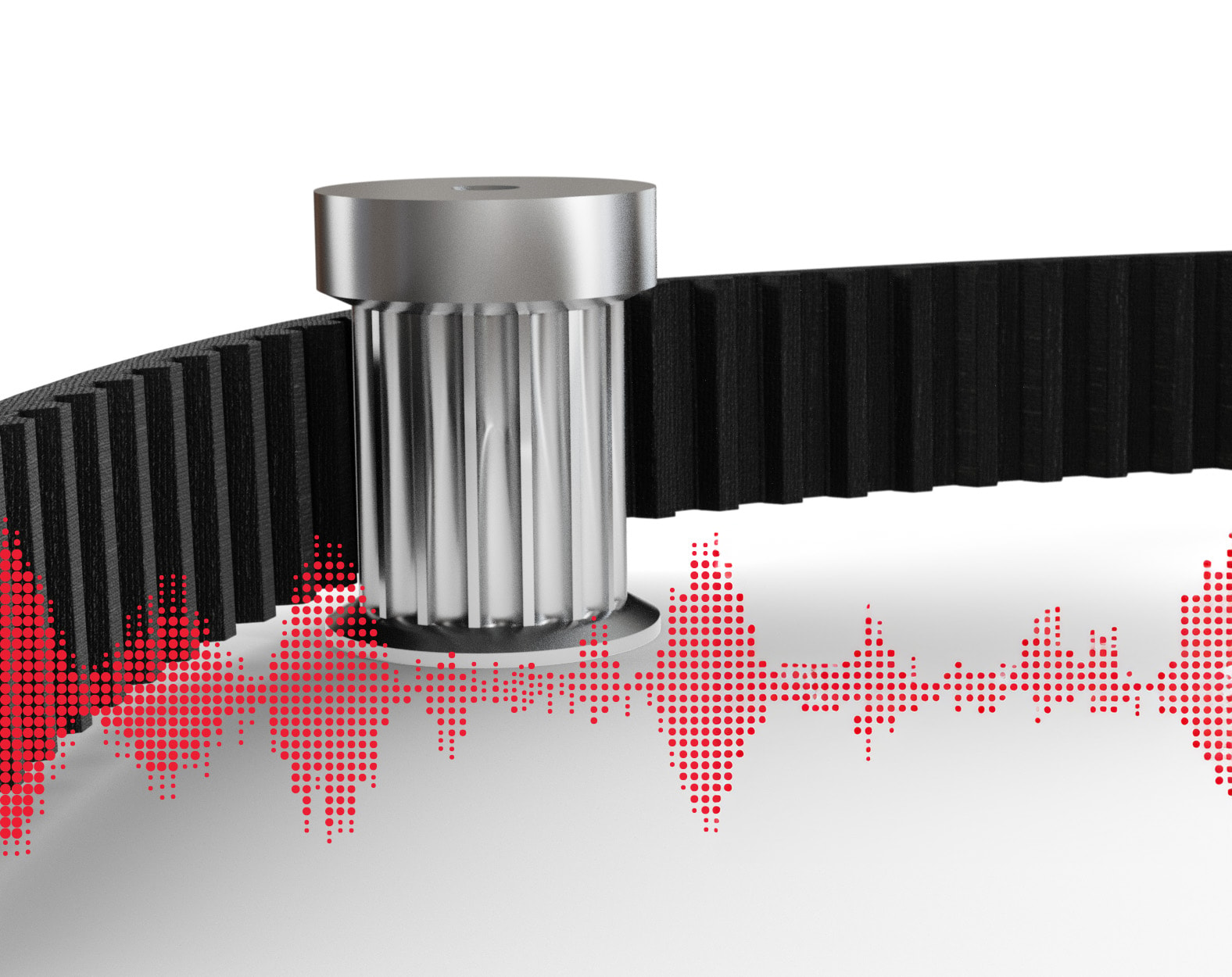
Timing belt noise is a common issue in many drive systems, arising from the interaction between the belt’s teeth and the pulleys during operation. The main drawback of timing belts in power transmission is their inherent noisiness. This noise is not just a minor inconvenience; it can be indicative of deeper mechanical issues that need addressing.
The noise frequency from a timing belt correlates with the speed and design of the belt and its pulleys. Increasing speed elevates noise levels, and design elements like width and pitch also influence the noise. Recognizing these factors aids in diagnosing and resolving noise issues.
Common Timing Belt Failures and How to Fix Them
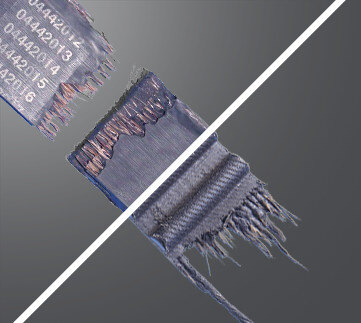
Broken Timing Belt |
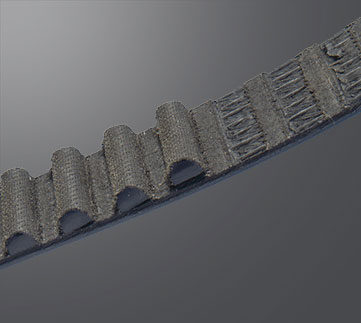
Tooth Shear |
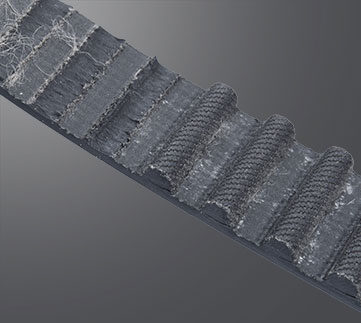
Tooth Wear |
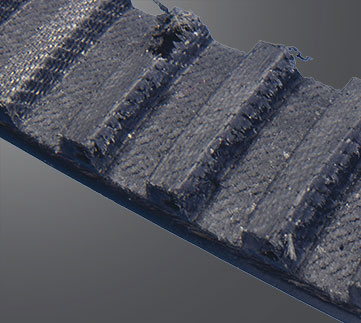
Hollowed Teeth |
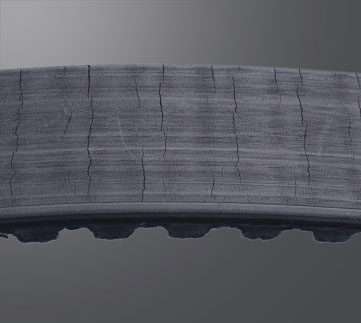
Cracks on Belt Back |
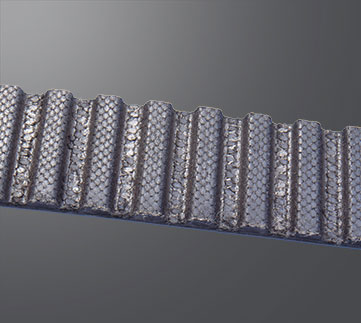
Land Wear (Surface Between Teeth) |
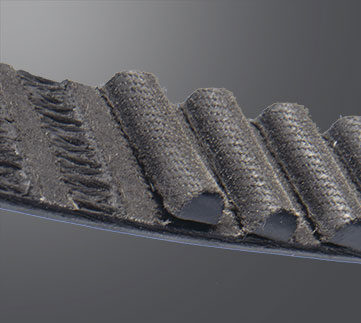
Oil Contamination |
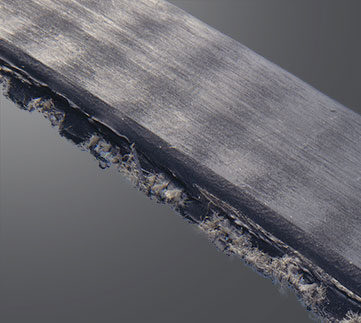
Edge Wear |
Common Causes of Timing Belt Noise
Misalignment
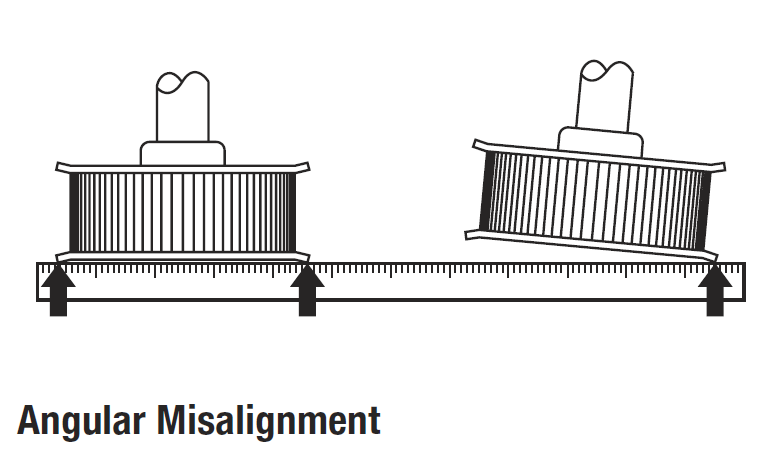
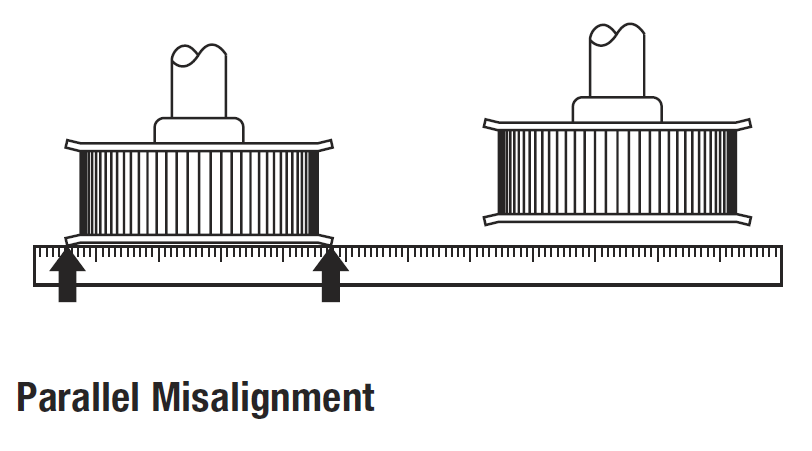
Common causes of timing belt noise include misalignment. A misalignment of over 1/4 degree can increase noise and reduce belt lifespan, causing inefficient operation and vibrations.
Angular misalignment occurs when the belt is not parallel to the pulley grooves, causing it to twist and wear unevenly. This increases friction and noise, as well as potentially damaging the tensioner. Over time, it can cause the belt to drift and risk slippage or failure. Addressing angular misalignment early is crucial for maintaining drive system efficiency and reducing noise.
Parallel misalignment occurs when the axes of two connected shafts are parallel but not collinear, meaning they are offset in a straight line. This type of misalignment can lead to uneven wear, vibration, increased noise, and potential damage in machinery systems that use shafts, pulleys, or belt drives.
Improper Tensioning
Improper tensioning is another major cause of timing belt noise. Excessive tension can amplify noise and damage components. Proper tensioning ensures smooth and quiet operation, preventing the belt from resonating and increasing noise.
In addition to causing noise, improper tensioning can lead to a host of other mechanical problems. Over-tensioned belts may exert undue stress on the bearings and pulleys, leading to premature wear and potential failure of these components.
For applications requiring customized solutions, explore our Tensioner Configurator Tool on our website. This intuitive tool allows you to design and specify a custom tensioner in seconds, helping you achieve optimal tension for your drive system.
With our stock options and easy-to-use configurator, finding the perfect tensioner for your application has never been easier. Visit our tensioner page to browse the available solutions or start customizing your own today.
Wear and Tear
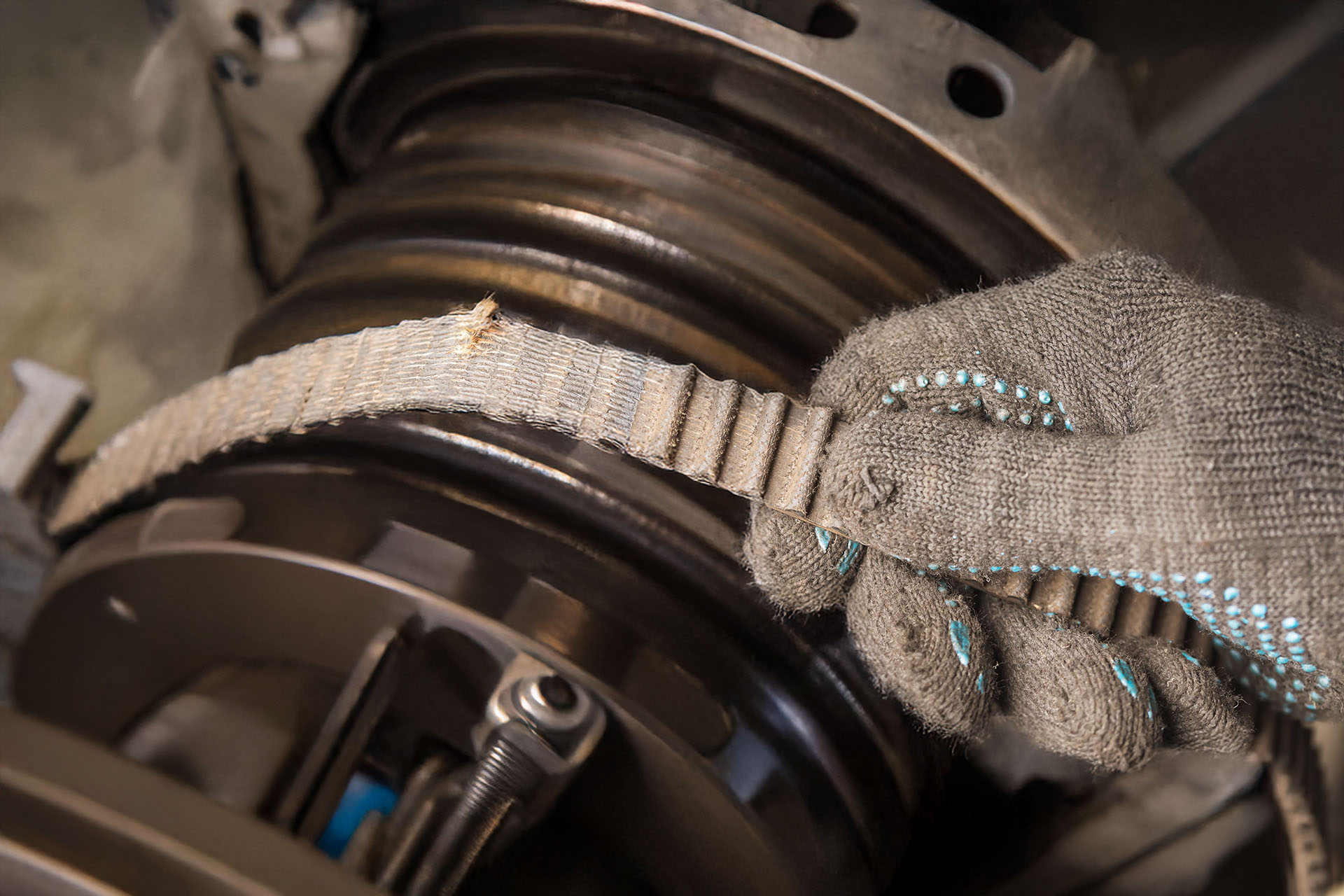
Wear and tear affect all mechanical components, including timing belts. Regular checks reveal early wear signs, preventing major damage. Inspections are key to identifying and addressing potential issues before they escalate.
Worn timing belts can significantly increase vehicle noise. Aging belts may have damaged teeth, causing slippage and noise. A loose belt can also contribute to these issues. Frequent inspections identify early wear or damage, enabling timely intervention and replacement of the serpentine belt.
Ignoring wear and tear can have serious consequences. A sudden timing belt failure can cause extensive damage and costly repairs, especially if it results from a bad timing belt.
Designing Quieter Timing Belt Systems
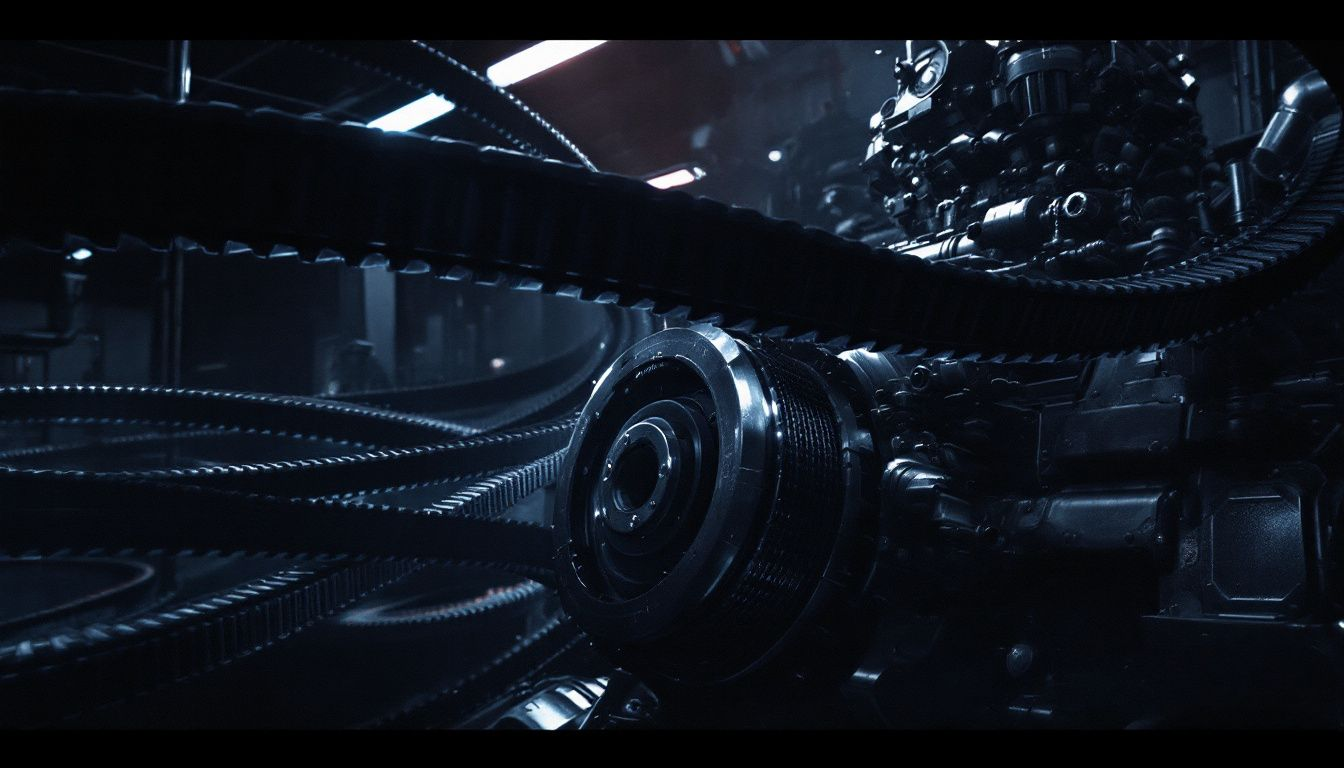
Creating quieter timing belt systems requires strategic modifications. Effective design strategies can substantially lower noise levels. Proper design principles significantly reduce operational noise.
Reducing timing belt noise involves optimizing drive system design, adjusting speed, width, and pulley dimensions. Material modifications and strategic designs further decrease noise. Understanding these elements leads to a quieter, more efficient system.
Every design choice, from pulley dimensions to material selection, matters. Focusing on these aspects significantly reduces noise levels, ensuring a smoother and quieter driving experience.
Optimizing Pulley Dimensions
Optimizing pulley dimensions effectively reduces timing belt noise. Larger diameters for small pulleys decrease the frequency of belt teeth entering and exiting grooves, reducing noise and improving belt longevity.
Using smaller pulleys with the largest pitch diameter possible can also decrease noise levels. This combination minimizes meshing frequency, leading to quieter operation. Reducing belt width while increasing small pulley diameter further minimizes noise.
Although minor, these modifications can substantially impact timing belt noise levels. Carefully considering pulley dimensions leads to a more efficient and quieter system.
Material Choices
Material choice for timing belts and pulleys significantly affects noise reduction. Neoprene belts produce less noise than polyurethane belts due to their properties. Similarly, polycarbonate pulleys are noisier than metal ones.
Choosing the right materials for timing belts is key to noise reduction. Pulley material choice also impacts overall noise, with polycarbonate options being noisier than metal alternatives.
By choosing materials that reduce noise, you can significantly improve the performance and quietness of your timing belt system.
Maintenance Tips for Reducing Timing Belt Noise
Proper maintenance is key to reducing timing belt noise. Improper tension can lead to high-pitched noise, especially noticeable at higher RPMs. Regular maintenance practices, such as checking the belt tension and keeping the belt clean, can help minimize noise and extend the belt’s lifespan.
Old or worn timing belts cause various noises and should be replaced promptly to prevent issues. Keeping the timing belt and related components in good condition ensures optimal performance and noise reduction. Regular maintenance identifies and addresses potential issues before they escalate, ensuring quieter and smoother operation.
Following these maintenance tips effectively reduces timing belt noise and improves vehicle performance. Detailed practices, including regular inspections and correct tension adjustments, further enhance the quietness of your system.
Regular Inspections
Regular inspections identify timing belt issues before they become serious. Incorrect alignment or tension can cause significant noise, indicating problems. Proactive inspections catch issues early, ensuring system longevity and functionality.
After some mileage, timing belt noise may diminish, misleading the assessment of belt condition. Regular inspections accurately assess belt condition, preventing potential surprises on the road.
Look for visible wear, cracks, or misalignment during inspections. Identifying these signs early allows for timely intervention, ensuring a quieter and more efficient system.
Correct Tension Adjustment
A timing belt tensioner is a critical component in timing belt drive systems, designed to maintain the proper tension in the timing belt. Proper tension is essential for ensuring that the belt stays securely engaged with the pulleys and gears it drives, preventing slippage, misalignment, or skipping teeth.
Proper tension adjustment is essential for minimizing timing belt noise. Check the tensioner indicator alignment and bearings to ensure smooth and quiet operation. The indicator should be visible in the cross-hatched area when re-tensioning the belt. Correct tension adjustment reduces noise and prevents potential damage, ensuring efficient operation of the timing belt tension.
Achieving the correct tension is not merely about tightening the belt until it feels firm. It's about finding the perfect balance where the belt is tight enough to prevent slippage but loose enough to avoid undue stress on the bearings and pulleys. This balance is crucial because an overly tight belt can lead to premature wear of the belt and related components.
Summary (Overview)
In summary, timing belt noise is a common issue that can be addressed through proper understanding, design, and maintenance. Identifying the causes of noise, such as misalignment and improper tensioning, is the first step in solving the problem. Regular inspections and timely belt replacement are crucial in preventing noise and ensuring the longevity of your drive system.
Designing quieter timing belt systems involves optimizing pulley dimensions and selecting the right materials. By making strategic design choices, you can significantly reduce the noise levels in your timing belt system, leading to a smoother and quieter driving experience.
Proper maintenance practices, including regular inspections and correct tension adjustment, are essential for reducing timing belt noise. By following these tips and solutions, you can keep your system running smoothly and quietly, ensuring a pleasant driving experience.
Frequently Asked Questions
What can be done to reduce timing belt noise?
To effectively reduce timing belt noise, focus on minimizing the belt's speed and width, using larger pulley diameters, and reducing equipment vibration. Implementing these changes will help create a quieter operating environment.
How does excessive misalignment affect noise generation?
Excessive misalignment exceeding 1/4 degree significantly increases noise generation in a drive due to improper functioning. Proper alignment is essential to minimize this unwanted noise.
What is the primary cause of noise in synchronous belts?
Noise in synchronous belts is primarily caused by the meshing between the belt and the pulley, resulting in a "slapping" sound and trapped air escaping, especially at higher speeds. This phenomenon can impact performance and should be monitored.
How does belt tension affect synchronous belt noise?
Belt tension significantly affects synchronous belt noise; excessive tension can lead to resonance, resulting in increased noise levels. Maintaining optimal tension is crucial for minimizing unwanted sounds.
















